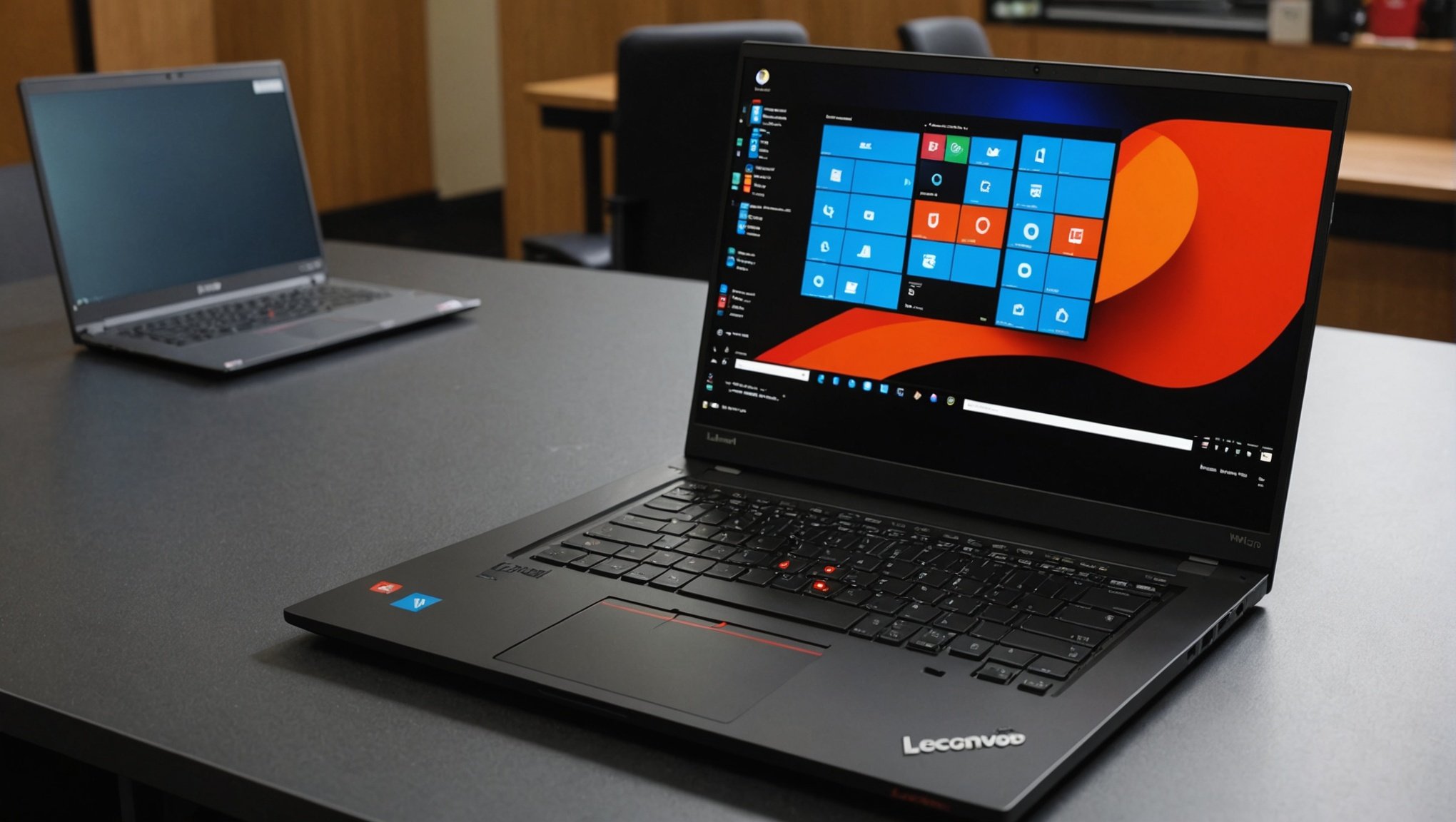Optimizing your Lenovo ThinkPad X1 Extreme can elevate your VMware Workstation experience dramatically. By fine-tuning settings and leveraging the laptop’s powerful hardware, you can achieve smooth virtual machine performance essential for demanding tasks. This guide will explore step-by-step strategies to maximize efficiency, enhance responsiveness, and streamline resource allocation. With the right adjustments, you’ll unlock the full potential of your device, transforming how you manage virtual environments. Let’s dive into optimizing for peak productivity with your ThinkPad.
Understanding VMware Workstation Performance Factors
When evaluating VMware Workstation performance, several factors play a crucial role, especially on devices like the Lenovo ThinkPad X1 Extreme. Virtualization performance is influenced by how well the software interacts with the hardware.
In parallel : Ultimate Guide to Optimizing Overclocking on ASUS ROG Crosshair VIII Hero with Liquid Cooling
Key Factors Affecting Performance
-
Processor and Cores: The ThinkPad X1 Extreme is equipped with robust processors that support virtualization tasks efficiently. The number of cores and threads significantly impacts the virtualization performance, allowing multiple virtual machines (VMs) to run concurrently with minimal lag.
-
RAM Allocation: Adequate RAM is essential for smooth operation. Allocating sufficient memory to each VM is crucial, as insufficient RAM can bottleneck performance, leading to sluggish operations.
This might interest you : Ultimate Guide to Building a High-Performance Gaming PC: Intel Core i7-11700K and NVIDIA RTX 3070 in a Stunning Lian Li PC-O11 Dynamic Case
-
Storage Type: The type of storage—SSD versus HDD—also affects VMware Workstation performance. SSDs provide faster data access speeds, reducing load times and improving overall efficiency.
Importance of Hardware Specifications
Hardware specifications are vital in determining the effectiveness of virtualization tasks. The ThinkPad X1 Extreme's high-performance hardware ensures that virtualization tasks are executed seamlessly, enhancing productivity and user experience. Understanding these factors allows users to optimize their systems for better VMware Workstation performance.
Hardware Optimization for Lenovo ThinkPad X1 Extreme
Optimizing hardware on the Lenovo ThinkPad X1 Extreme is crucial for enhancing VMware Workstation performance. A well-configured system ensures efficient CPU performance and effective RAM allocation.
Recommended Hardware Configurations
To achieve optimal VMware performance, consider the following configurations:
-
CPU Performance: Utilize processors with multiple cores and threads. This enhances the ability to run several virtual machines (VMs) simultaneously without compromising speed.
-
RAM Allocation: Allocate enough RAM to each VM. For demanding tasks, upgrading to at least 16GB or more is advisable, ensuring smooth operations and preventing bottlenecks.
Upgrading RAM and Storage Options
Enhancing RAM and storage can significantly improve VM management. Upgrading RAM allows more VMs to run efficiently, while increasing storage capacity supports larger datasets.
- SSD versus HDD: Opt for SSDs over HDDs for storage. SSDs offer faster data access speeds, reducing load times and boosting overall system responsiveness.
These hardware optimizations not only improve VMware Workstation performance but also enhance the overall user experience, making the Lenovo ThinkPad X1 Extreme a powerful tool for virtualization tasks.
Software Settings and Configurations
Optimizing VMware settings and software configuration is essential for achieving peak performance. Proper configuration can significantly enhance your virtualization experience, ensuring efficient use of resources.
Adjusting VMware Workstation Preferences
Fine-tuning VMware Workstation preferences is crucial for performance tuning. Adjusting settings such as memory and CPU allocation can help distribute resources more effectively across virtual machines. Ensuring these settings align with your hardware capabilities can prevent bottlenecks and improve overall efficiency.
Configuring Virtual Machine Settings
Customizing virtual machine settings is vital for optimal resource allocation. By tailoring the CPU and memory settings to match the specific needs of each VM, you can ensure balanced performance. This includes setting the number of CPU cores and the amount of RAM each virtual machine can access, which helps in managing workloads efficiently.
Optimizing Host and Guest OS Settings
Optimizing both host and guest operating systems is another key aspect of performance tuning. This involves managing updates and ensuring that both systems are running the latest versions. Keeping software up-to-date not only improves security but also enhances compatibility and performance. Proper update management is essential for maintaining the stability and efficiency of your VMware Workstation environment.
Performance Tuning Techniques
Achieving optimal performance tuning in VMware environments requires meticulous attention to resource management. Implementing virtualization best practices ensures that your system operates efficiently and reliably.
Managing CPU and RAM Resources
Properly managing CPU and RAM resources is crucial for maintaining high performance. Allocate CPU cores wisely, ensuring that each virtual machine (VM) receives adequate processing power without overcommitting. Similarly, allocate RAM based on the workload requirements of each VM. This prevents resource contention and optimizes overall system performance.
Network Performance Optimization
Enhancing network performance in virtual environments involves several strategies. Use network segmentation to reduce traffic congestion and improve data flow. Additionally, implement Quality of Service (QoS) settings to prioritize critical traffic, ensuring that essential applications maintain consistent performance.
Disk I/O Optimizations
Optimizing disk I/O is vital for smoother VM operations. Use solid-state drives (SSDs) for faster data access and reduced latency. Implement disk caching techniques to minimize read/write operations, thereby enhancing performance. Regularly monitor disk usage to identify and address potential bottlenecks promptly.
By adhering to these virtualization best practices, you can significantly improve your VMware environment's efficiency, ensuring a seamless and productive user experience.
Troubleshooting Common VMware Performance Issues
When dealing with VMware performance problems, identifying and analyzing common bottlenecks is crucial. Performance issues often stem from resource limitations, misconfigured settings, or outdated software. Recognizing these bottlenecks early can prevent larger VMware issues from developing.
Identifying Common Bottlenecks
Troubleshooting begins with pinpointing where performance lags occur. Common bottlenecks include CPU overcommitment, insufficient RAM, and inefficient disk I/O. Analyzing system logs and performance metrics can help in identifying these issues. Tools like VMware's built-in performance charts or third-party utilities can be invaluable for this analysis.
Effective Resolution Strategies
Once bottlenecks are identified, implementing effective strategies is key. For CPU issues, ensure that virtual machines (VMs) aren't allocated more resources than available. Adjust RAM allocations to meet the demands of each VM, and consider upgrading to SSDs for better disk performance. Regularly updating VMware software can also resolve many virtualization-related issues.
Monitoring Tools and Utilities
Utilizing monitoring tools is essential for ongoing performance troubleshooting. VMware offers several utilities, such as vRealize Operations, which provide insights into system health and performance. These tools help maintain optimal performance by offering real-time data and alerts for potential VMware issues.
Advanced Optimization Strategies
To achieve superior virtualization performance, employing advanced optimization techniques is crucial. These strategies go beyond basic configurations, offering expert insights into maximizing efficiency.
Utilizing VMware Tools for Enhanced Integration
VMware provides a suite of tools designed to improve integration and performance. These tools facilitate seamless interaction between the host and guest systems, enhancing resource management and ensuring smoother operations. By ensuring that VMware Tools are installed and updated, users can leverage features like shared folders and improved graphics performance, which are essential for optimizing virtual environments.
Exploring Advanced Settings for Power Management
Adjusting power management settings can significantly impact virtualization performance. The Lenovo ThinkPad X1 Extreme, with its robust hardware, benefits from fine-tuning these settings. By configuring advanced power options, users can balance performance with energy efficiency, ensuring that virtual machines operate at peak capacity without unnecessary power consumption.
Community-Driven Tips and Configurations
The Lenovo ThinkPad X1 Extreme user community offers a wealth of expert tips and configurations tailored to this device. Engaging with forums and user groups can provide valuable insights into advanced optimization techniques. These community-driven solutions often address specific challenges and enhance the overall virtualization experience, empowering users to make informed adjustments.











